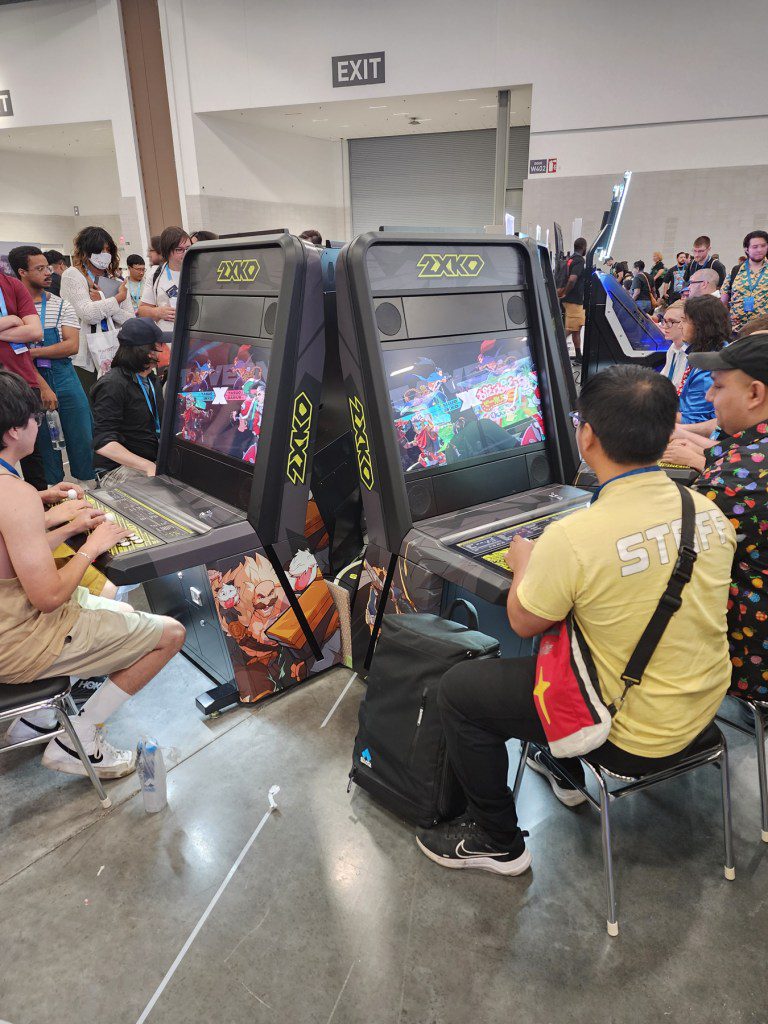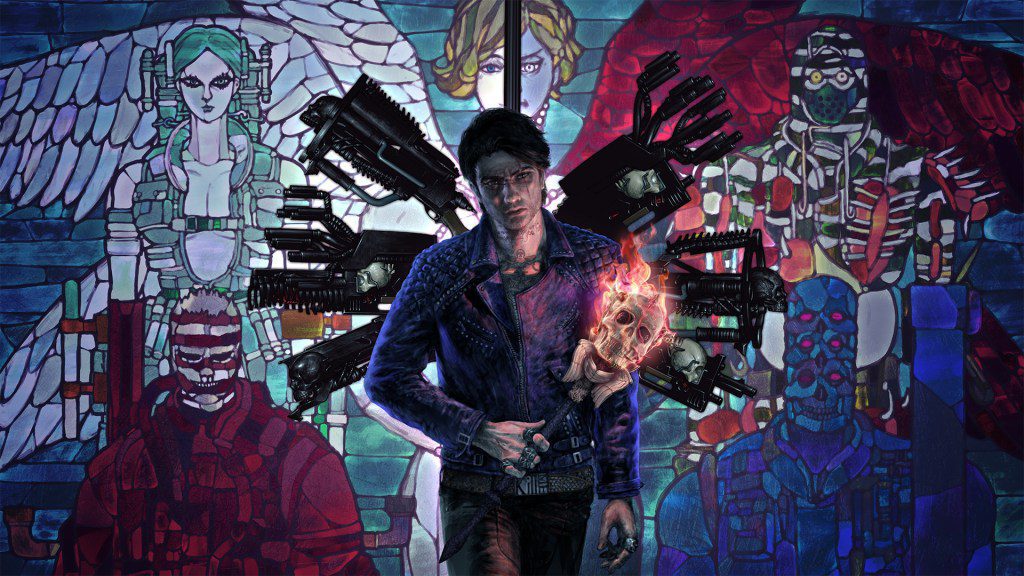Riot Games’ ‘2XKO’ Has a Promising Future — If You’re Willing to Wait
Fighting games have a reputation of being extremely difficult, too mentally taxing, and mechanically prohibitive to newcomers. While fighters at their core are no more complex than other genres, many different fighting games have tried to become more welcoming to a wider audience, while working to keep the same depth that competitors at the highest level fall in love with. Riot Games’ upcoming fighter, 2XKO, is the latest attempt to balance these frustrations.
Formally known as Project L, 2XKO was announced back in October 2019 during Riot Games’ 10-year anniversary celebration. At first teased as a traditional 1-on-1 fighter featuring champions in Riot Games’ League of Legends universe, 2XKO eventually transformed into a 2-on-2 tag fighter, with the option of allowing one player to control each character on a team — something that hasn’t been seen in the genre since Street Fighter x Tekken all the way back in 2012. No longer does introducing a friend into a fighting game mean you’re forced into facing off against them; you’ll have the opportunity to show them the ropes by working together as a duo.
Outside of select influencers invited by Riot to try the game out at the company’s studios, the game has only been accessible to tournament attendees at select events. Every time 2XKO has made an appearance, it never failed to draw massive lines. However, the game hasn’t been accessible to the wider public outside of these in person events — but that’s all about to change. Next month, the game will be accessible to the wider public when Riot hosts its first online alpha test of the game in select countries from Aug. 8 to 15.
Impressions of the game
2XKO’s greatest triumph of player expression is the Fuse system. Reminiscent of Capcom vs SNK 2’s Groove system, fuses alter the way you play the game by providing you different abilities. Currently there are five different fuses (2X, Double Down, Freestyle, Fury, and Pulse) and each enable a different playstyle if you take the time to understand the intricacies of each one.
Even if two players pick the same exact character composition, a change in fuse can alter their playstyles in a drastic manner.
I had the chance to play a version of the game earlier this year, and I could feel the subtle improvements that have been made to the game with the newest version. From adding more visual flair and clarity to the UI, to even adding whole new system mechanics like the new beginner-friendly Pulse Fuse, the 2XKO team has been taking player feedback to heart and constantly working on iterations to further improve the game.
Courtesy of Dylan Ladd
Beginner-friendly mechanics is always a topic for contention in fighting games. While some players fear it sacrifices depth for approachability, 2XKO manages to carve a space for both newcomers and veterans. Players newer to fighting games can manage to perform cool moments, thanks to the lack of motion inputs and new Pulse Fuse, and professionals can still perform combos with high execution requirements and powerful opportunities to open up their opponents.
In a match I had versus Shaun “Unconkable” Rivera, the game’s director, I was delighted when he was able to land a 40 hit Ekko/Yasuo combo against me, this coming after the combo length has been shortened compared to earlier iterations. There was also a time where I had to block a seven-second mixup, and both of these instances show there are still opportunities for those invested into the game to try and chase after those highs.
Even though the game at surface level has clear inspirations from Marvel vs Capcom (in part due to the fact that there’s MvC veterans on the team), the development team has noteworthy figures of every game within the genre, from Guilty Gear and Street Fighter to even 3D fighters like Tekken.
When I started playing 2XKO, I naturally gravitated towards the Double Down Fuse, as allowing the use of back to back supers between characters was very reminiscent of Marvel vs Capcom. Eventually I would go on to try Freestyle since it felt powerful for allowing potent opportunities for aggression, eventually settling on 2X Fuse once I got more hands-on time at EVO.
The game also felt incredibly balanced as a solo player against a team of two. When I matched up against two players by myself at EVO, I was still able to find my footing against them and keep the match score even.
Developers’ insights and philosophies about 2XKO
Aside from challenging the 2XKO team to matches, I also got the chance to chat with them about their design philosophy and goals for the game.
Caroline “Shyvana” Montano, who is the design lead of Illaoi, shared the different iterations that the company went through to get to where she is today.
“Illaoi’s Test of Spirit [her E-ability in League of Legends] was more integral to her kit early on in the development cycle, she could pull the spirit out of the opponent and smack it around, sometimes leading to a three man happy birthday in a two player game,” she says, laughing at the prospect. “However we eventually found it wasn’t fun to be on the receiving end of it, so we eventually scrapped this. We still knew that we wanted to keep the Test of Spirit from Illaoi since it was such an iconic ability, so we eventually got to work it into being her level 2 cinematic ultimate.”
Monatno also talked about design goals that the team has for each character. “We want to make sure that each character should have certain tools to answer specific problems,” she says. “Previously, Illaoi was a bit weak to opponents spamming Retreating Guard, which was weak to lows, so we gave her Down+S2 which hits low, so if you can make the correct read with proper reaction you can call out their defense.”
Braum’s designer, Steve “UpToSnuff” Bankert, also talked about Braum’s development process and other design philosophies.
“We had a more technically demanding version of Braum’s shield which was a bit more complicated to use and fight against,” he says. “We stuck with that build for a long time, but we eventually scrapped that idea about a year ago and the Braum that’s playable here is the version we went with afterwards.”

Courtesy of Dylan Ladd
He also discussed the philosophy behind the team’s vision. “I sort of see our game as having multiple avenues of mastery: your ability to use your moves at the right time, call your assist at the right time, knowing [Braum’s] good matchups, weaknesses, playing around those; all things we’re used to,” he says.
“All of that will get you past the first layer even if you’re teaming up with someone new; but then as you play the characters, [and become] more and more comfortable with the game, you’ll find your own unusual moments to assist. That’s something that players are going to find on their own and that’s part of the beauty of a game that’s as wild and creative and experimental as our game.”
The moment that makes 2XKO marvelous
The most memorable experience I had that put this design philosophy of 2XKO to the test was when I was matched with another attendee, who was Japanese. Despite us having to contend with a language barrier, we still were able to strike up a conversation.
“What characters do you like?” I asked.
“Ahri Illaoi.” He responded.
“Do you have a fuse you want?” I wondered.
“2X or Double Down.” He noted.
I laughed, “Now you’re speaking my language,” I said, as I slammed the button confirming the 2X Fuse for the both of us.
During the match we were able to quickly get in sync with one another, setting each other up to find opportunities in neutral to land impressive combos. Understandably, there were a few stumbles and missteps, but that’s natural when teaming up with someone you just met, and we were still able to course-correct immediately after. We didn’t need to share a language to share a victory.
I also got to play against other Japanese players, and afterwards we started pulling out Google Translate to chat with one another about our experiences with 2XKO share tech in the game.
Through the translation tool I was able to share with another player that a member of the team told me that there was a function of Illaoi’s S1 Super, where you could teleport tentacles to the opponent. I could feel the excitement that he had from learning it. In our match, I was able to show him more in-depth the exact timing; and then he was able to promptly beat me with the same tech.
While 2XKO’s current release window is long way out from now, currently slated for a 2025 release, every iteration of the game shows promise of a fighting game that is not only fun to play and hone, but is also a blast to solve with a friend by your side.





